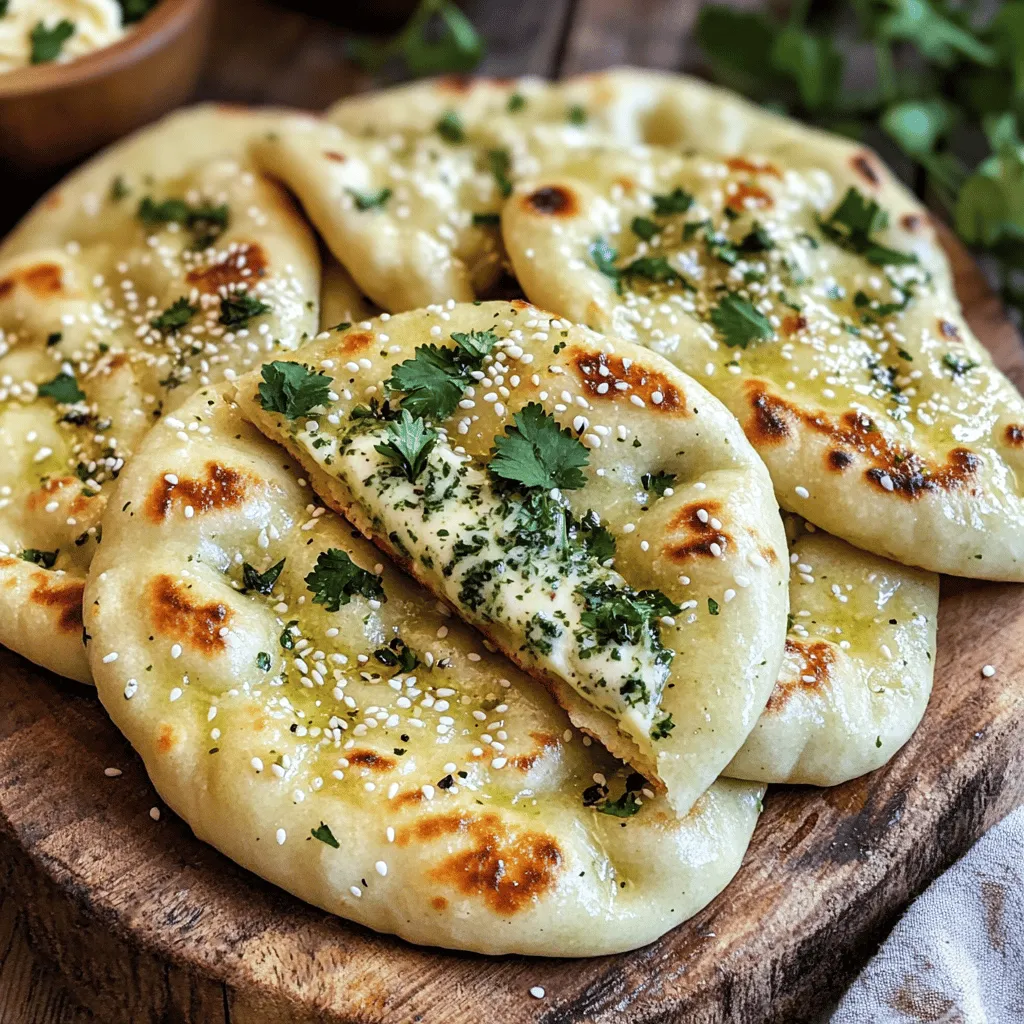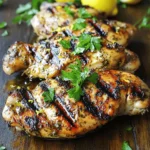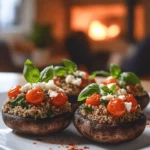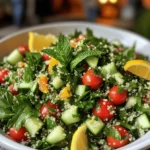Naan is a beloved bread that deserves your attention. Knowing the essential ingredients will help you create the best naan ever. In this post, I’ll share what makes naan delicious, tips for cooking it just right, and the different types you can make. Whether you’re a beginner or an expert, you’ll find useful insights to elevate your naan game. Let’s dive into the world of naan together!
What Are the Essential Ingredients for Making Delicious Naan?
Naan is a soft, flat bread that pairs well with many dishes. To make perfect naan, you need a few key ingredients. The main ingredient is all-purpose flour. It gives naan its soft and chewy texture. You will also need plain yogurt. Yogurt adds moisture and flavor. Warm milk helps to activate the yeast.
Next, we have active dry yeast. Yeast makes the naan rise and become fluffy. Sugar feeds the yeast, helping it work well. Salt adds taste and balances the flavors. Olive oil keeps the dough smooth and helps with the texture. Garlic and herbs, like cilantro and parsley, give naan a delicious twist.
What Are the Key Ingredients Needed for Naan?
The key ingredients for naan include:
– All-purpose flour
– Plain yogurt
– Warm milk
– Active dry yeast
– Sugar
– Salt
– Olive oil
– Garlic
– Fresh herbs (cilantro and parsley)
These ingredients work together to create a tasty naan. Each plays an important role in flavor and texture.
How Do Different Ingredients Affect Naan Flavor and Texture?
Each ingredient affects naan’s flavor and texture. All-purpose flour makes naan soft. Using whole wheat flour will make it denser. Yogurt gives it a slight tang. The fermentation process from yeast creates air pockets, making naan fluffy.
Warm milk helps the dough soften, while sugar helps yeast grow. Salt enhances all the flavors, making naan more delicious. Olive oil adds richness. Garlic and herbs boost the flavor profile even more.
What Are Some Common Substitutions for Naan Ingredients?
If you lack an ingredient, don’t worry. You can make substitutions. For all-purpose flour, you can use bread flour. It has more protein, which helps with texture. Yogurt can be replaced with buttermilk or a non-dairy yogurt for vegan options.
Instead of warm milk, you can use water but it may not be as rich. If you don’t have yeast, you can try baking powder, but the texture will be different. Use vegetable oil if olive oil is not available. And for garlic, you can use garlic powder.
These substitutions allow you to customize your naan while still keeping it tasty. For a full recipe, check out the Fluffy Garlic Naan with Herb Infusion.
How Can You Perfect Your Naan Cooking Technique?
To make naan at home, you can use different cooking methods. The most common way is to use a skillet or a tandoor. A tandoor gives naan that smoky flavor and unique texture. If you lack a tandoor, a cast-iron skillet works well too. Heat the skillet over medium-high heat before adding the naan. This helps achieve that lovely char.
Achieving the perfect texture in naan is key. Start with all-purpose flour. It gives naan that soft, chewy bite. Add yogurt into the dough for moisture and tang. This ingredient helps make the naan tender. Also, use warm milk to activate the yeast. Yeast is essential for making the naan rise.
For fluffy naan every time, knead the dough well. Use your hands to combine until it’s smooth and elastic. This process usually takes about 8-10 minutes. After kneading, let the dough rise in a warm spot. Cover it with a damp cloth to keep it moist. Give it at least one hour to double in size.
Another tip for fluffy naan is to not skip the resting time. Once you divide the dough, let each piece rest. This step helps relax the gluten, making it easier to roll out. When rolling, aim for about 1/4-inch thickness. This thickness allows the naan to puff nicely when cooked.
Using the right cooking techniques is crucial. When you place the naan in the skillet, watch for bubbles. These bubbles mean the naan is cooking well. Flip it over when you see them, then cook until lightly charred. This technique gives your naan that perfect combination of chewy and soft.
For the full recipe, check out Fluffy Garlic Naan with Herb Infusion. Enjoy the process and let your naan-making journey begin!
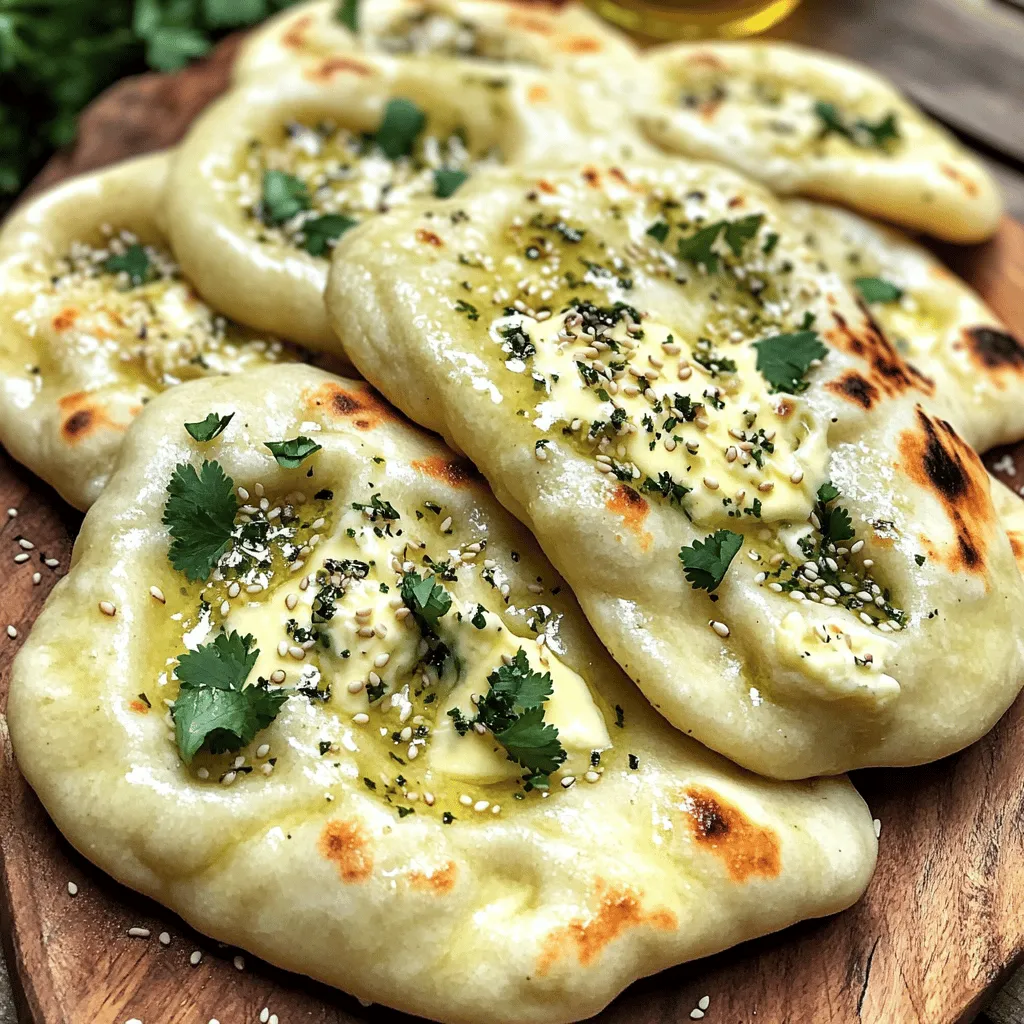
What Are the Different Types of Naan You Can Explore?
Naan comes in many tasty varieties. Each type has its own unique twist.
What Are Some Popular Variations of Naan?
Some popular variations include garlic naan, cheese naan, and stuffed naan. Garlic naan features minced garlic and butter. It adds a rich flavor to any meal. Cheese naan melts cheese inside, making it gooey and delightful. Stuffed naan can have potatoes, paneer, or even meats inside. Each variation provides a new taste experience.
How Do Traditional Recipes Differ from Modern Takes on Naan?
Traditional naan recipes often use a clay oven called a tandoor. This method gives naan a smoky flavor and soft texture. Modern recipes may use a skillet or oven, which is easier for home cooks. While the texture may change, you can still achieve great flavor. Many cooks now experiment with spices and herbs, making naan even more exciting.
What Vegan Options Exist for Making Naan?
Vegan naan recipes replace yogurt and butter with plant-based options. You can use almond milk or coconut yogurt instead. Many enjoy adding olive oil for richness. These swaps maintain great taste while keeping it plant-based. You can still enjoy fluffy naan without any animal products. This way, everyone can enjoy this delicious bread. Check out the full recipe for a great vegan naan option!
How Do You Serve and Pair Naan with Other Dishes?
Naan is a great bread that goes well with many dishes. You can pair naan with curry, dal, or grilled meats. The soft texture of naan soaks up flavors. This makes it a perfect choice for rich sauces.
What Are the Best Dishes to Accompany Naan?
Some of the best dishes to serve with naan are chicken tikka masala, palak paneer, and butter chicken. Each dish has a unique flavor that matches naan well. The creamy sauces in these dishes blend beautifully with the bread.
How Can You Elevate Your Naan Serving Experience?
To elevate your naan experience, try serving it warm. You can brush it with garlic butter or sprinkle fresh herbs on top. Adding a side of pickles or fresh salad can also add crunch. This contrast makes the meal more exciting.
What Popular Sauces and Dips Go Well with Naan?
You can dip naan in many sauces and dips. Some popular choices include mint chutney, yogurt sauce, and tikka masala sauce. These dips enhance the flavors of naan. They also add a refreshing taste to each bite. For a complete meal, you can find the Full Recipe for fluffy garlic naan with herb infusion. It’s simple and delicious!
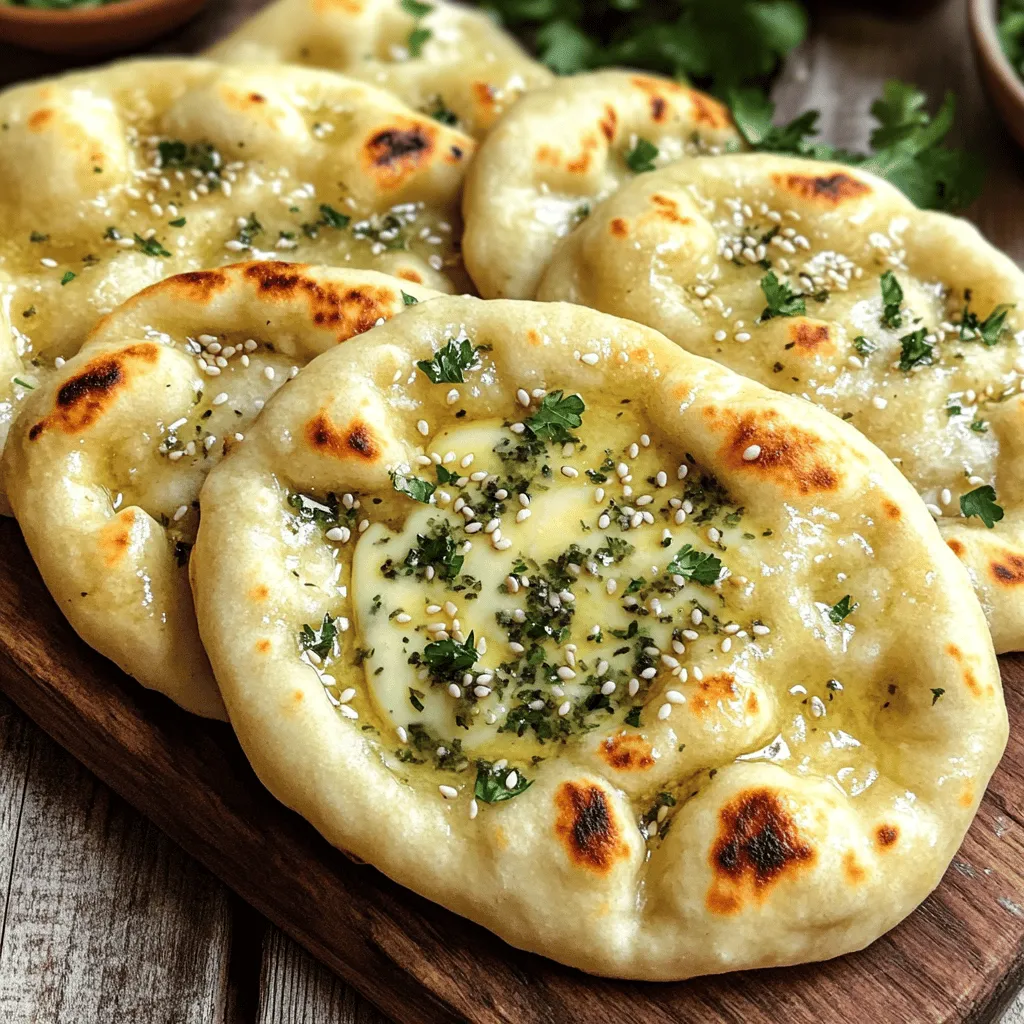
What Is the History and Cultural Significance of Naan?
Naan has a rich history that dates back centuries. It likely began in Central Asia around the 6th century. The name “naan” means “bread” in Persian. Over time, it spread through India and other regions. Each country added its twist, making naan unique.
Naan plays a big role in South Asian meals. In Indian culture, it often accompanies curries and grilled meats. It’s more than just food; it represents warmth and togetherness. Families gather to share meals, with naan being a staple.
Many cultures have their own versions of naan. For example, in Iran, they serve a flatbread called “sangak.” In Turkey, you find “pide,” which is also a flatbread. Each type has its own cultural significance.
Naan has evolved over time. Originally, it was cooked in clay ovens called tandoors. Today, you can find naan made in many ways, from home ovens to skillets. This flexibility shows its appeal.
The cultural significance of naan extends beyond just eating. It is often part of celebrations and festivals. People bake it for weddings and special events. Its presence at these gatherings highlights its importance in community and family life.
Naan connects people through its history and flavors. As you savor a piece, think about its journey from ancient kitchens to your table. Enjoying naan is a way to share in a global culinary tradition. For a delicious homemade version, try the Fluffy Garlic Naan with Herb Infusion recipe.
How Can You Make the Fluffiest Naan at Home?
To make fluffy naan, start with the right ingredients. You need all-purpose flour, yogurt, warm milk, and yeast. These key items help create the soft texture we love in naan. The yeast helps the dough rise, giving it that airy feel.
What Step-by-Step Process Can You Follow for Perfect Naan?
1. Activate the Yeast: Mix warm milk, sugar, and yeast. Let it sit for five to ten minutes. It should get frothy.
2. Combine Dry Ingredients: In a mixing bowl, add flour and salt. Make a well in the center.
3. Mix Wet Ingredients: Add yogurt and the yeast mixture to the flour. Stir until combined.
4. Knead the Dough: Knead the dough for eight to ten minutes. It should feel smooth and elastic.
5. Let It Rise: Place the dough in an oiled bowl. Cover it with a damp cloth. Let it rise for one to one and a half hours until it doubles in size.
6. Shape the Naan: Once risen, punch the dough down. Divide it into six balls. Roll each into an oval shape.
7. Cook the Naan: Preheat a skillet. Cook each naan for one to two minutes on each side.
How Does Kneading and Resting Dough Affect Fluffiness?
Kneading is key. It develops gluten, which gives naan its chewy texture. If you skip kneading, your naan may turn out dense. Resting the dough is just as important. It allows the gluten to relax. This makes it easier to roll out and helps create those lovely air pockets.
What Tips Can Help Beginners in Naan Making?
For beginners, measure your ingredients carefully. Too much flour can make naan tough. Use warm milk, not hot. Overheating can kill the yeast. Let your dough rise in a warm spot. If your kitchen is cold, try placing it in the oven with the light on. Lastly, don’t rush the cooking. A well-cooked naan will have a nice char and great flavor.
For a delicious recipe, check out the Full Recipe for Fluffy Garlic Naan with Herb Infusion.
What Are the Essential Ingredients for Making Delicious Naan?
To make naan, you need a few key ingredients. The main one is flour. I use all-purpose flour for a soft texture. You also need plain yogurt. This adds moisture and a slight tang. Warm milk is another must. It helps the dough rise well.
Next, you need active dry yeast. This helps the naan puff up. A bit of sugar feeds the yeast, making it active. Salt is essential too. It adds flavor and balances the taste.
Olive oil is key for softness. It keeps the naan from being too dry. I love adding garlic for flavor. Fresh herbs like cilantro and parsley make it pop. Finally, butter adds richness when you brush it on the hot naan.
These ingredients create a perfect base for naan. You can find the full recipe for fluffy garlic naan with herb infusion above. Understanding these elements changes how you make naan. Each ingredient plays a role in texture and taste.
In this article, we explored the essential ingredients for naan, cooking techniques, types, and serving ideas. Knowing these tips helps you make tasty naan at home. You learned about common substitutions and the history of naan. My final thoughts: making naan can be a fun journey. Experiment with different ingredients and flavors. Whether you choose traditional or vegan options, enjoy every bite! Your naan can be perfect with practice and patience.

